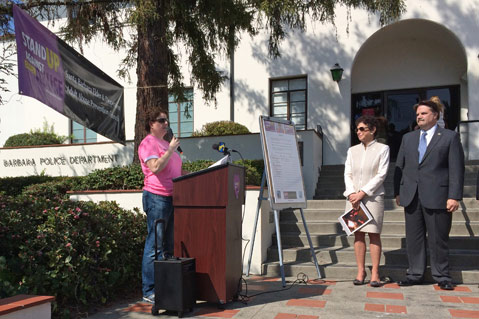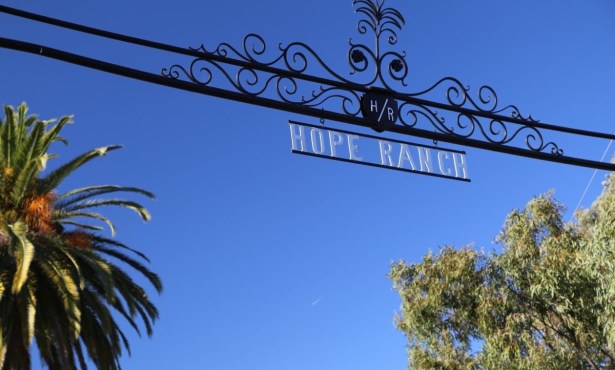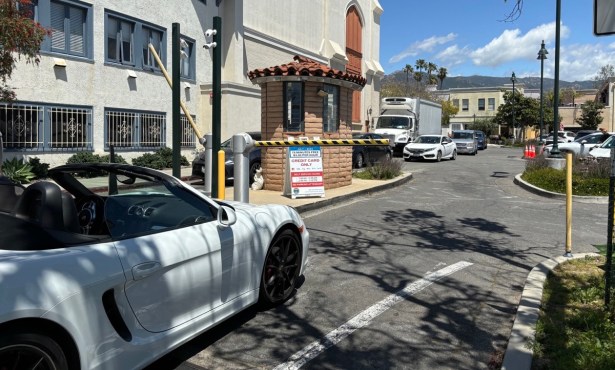Better Protections for Vulnerable Victims
DA Touts Efforts to Curb Human Trafficking and Elder Abuse

Two campaigns to assist vulnerable populations were unveiled in Santa Barbara this week. The first is a task force set up to combat human trafficking, and it largely focuses on young people. The other is a collaborative effort by the public and private sectors to reduce elder abuse. Both incorporate an assortment of resources and seek to protect the most susceptible members of the community.
Unlike other District Attorney’s Office task forces — like one recently established to fight animal cruelty — the human-trafficking unit was created to determine to what extent the problem exists in Santa Barbara. “We need to prevent this,” said District Attorney Joyce Dudley. Since it was established last August, the DA’s Office has arrested a handful of individuals and is working on several active investigations. “We’re not going to wait around for statistics,” Dudley said. The task force is made up of 70 members from a slew of agencies including Homeland Security, Rape Crisis Center, child welfare, and faith-based communities.
Dudley, who’s worked to prevent violence against women for much of her career, explained that Santa Barbara acts as a corridor between Los Angeles and San Francisco. It’s a community that’s easy to get in and out of, and some rings operate by moving up and down California, or even from the East Coast to the West Coast.
Some traffickers operate via websites like The Erotic Review and My Red Book, and minors are sometimes involved. Blog posts can include geographic locations and are often accessible temporarily or are written in code. Drugs, especially methamphetamine, are commonly used to drag a young person into such a lifestyle, explained Chief Trial Deputy Mag Nicola, who plays a key role in the task force. In the past several years, Asian massage parlors have also been on law enforcement’s radar.
A lack of treatment facilities is one of the key problems because victims are left without a safe place to return to, possibly leading them right back to their pimps, explained Director of Victim Services Megan Riker-Rheinschild, who is heading the task force.
Educating law enforcement officers is a crucial component, Dudley explained, as the so-called “children of the night” are sometimes considered suspects rather than victims because of drug or theft involvement. “Unless we ask the right questions, we don’t know that in fact they’re trafficked victims,” she said.
Deputy Chief Probation Officer Steve DeLira — who has worked in the county for 27 years and is part of the task force — said he is seeing more girls self-disclose their sexual behavior to mental-health counselors, probation officers, or medical staff during entry exams. In 2012, Proposition 35 stiffened penalties for convicted traffickers, expanded outreach and training to law enforcement officers, and required traffickers to pay fines toward victim services.
Yesenia Curiel, program director at the Rape Crisis Center, explained the center’s certified assault counselors accompany the victim if she or he must testify in court. “Many people may not consider themselves victims,” Curiel added, explaining that survivors sometimes struggle because they have feelings for the trafficker. “But there is no equality there.”
In North County, Ann McCarty, who is on the task force also representing the Rape Crisis Center, noted that tracking statistics is tricky and not always telling. An increase in the number of cases does not necessarily mean that it’s happening more, she added, but that incidents are being reported more.
Vulnerable senior citizens were also in the spotlight this week as various agencies gathered Tuesday for a press conference about elder abuse. Dressed in bright pink T-shirts that read “#No2ElderAbuse,” the Santa Barbara Elder & Dependent Adult Abuse Prevention Council spearheaded the event to raise awareness.
Dudley — holding up a photo of her 90-year-old mother — told the crowd that most crimes perpetrated against elders actually come from the family and in the form of neglect, physical abuse, sexual abuse, financial abuse and exploitation, and emotional abuse, or abandonment.
Dudley added elder-abuse crimes are largely underreported because victims feel as if they “won’t” or “can’t” come forward, due to dependency issues or physical disabilities. Sheriff Bill Brown also spoke and said that for every case reported — roughly 25 egregious cases are reported each year in the county — another 23 are unreported.
Marion Schoneberger, longtime Santa Barbara health-care professional, told the crowd about a personal experience with a young, seemingly exceptional caregiver who turned out to be financially abusing her father by buying items like a couple of extra boxes of Cheerios while doing his shopping. These small purchases added up to $30,000 over the last two years of his life.
To take Stand Up Against Elder Abuse campaign’s pledge, visit CentralCoastSeniors.org.



